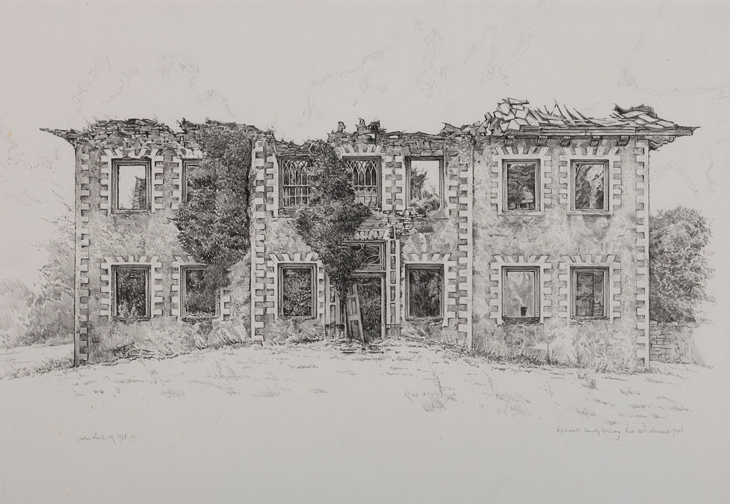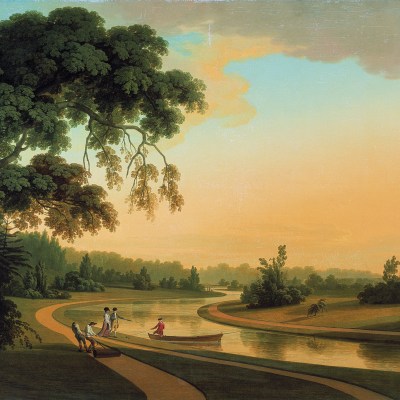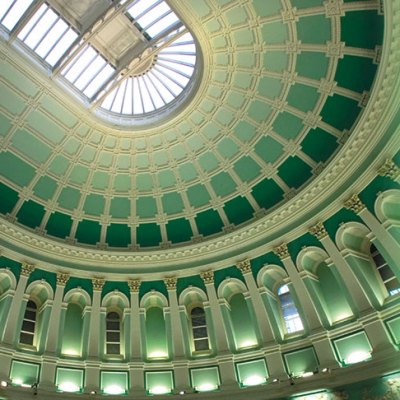At the end of August Ireland’s Heritage Council released a five-year strategic plan, proposing to set out a new vision for the country’s heritage and to map a route towards its realisation. The idea is that by 2022 ‘heritage will be at the heart of Irish society and decision-making and that Ireland will be internationally recognised as a centre of excellence in heritage management, conservation and community engagement’. As so often with such documents, this one is strong on lofty aspiration but weaker on specific action leading to the achievement of goals. But if evidence is required to demonstrate how heritage management and conservation are often sorely lacking in contemporary Ireland, it can be found in a newly opened exhibition presented by the Irish Georgian Society at the City Assembly House in Dublin: ‘Vain Transitory Splendours’, a collection of 87 drawings by English artist John Nankivell.
Now aged 77, Nankivell has been a regular visitor to Ireland since his teens and from the mid 1970s onwards explored and depicted historic properties across the island. Working in pencil on paper and usually completing each picture on site, Nankivell early on focused his attention on abandoned and ruined country houses, of which there is an abundant supply.
Tyrone House, Co. Galway (n.d.), John Nankivell. Courtesy the Irish Georgian Society

With its Ozymandian subtext of ambition brought low, the subject matter is inherently melancholic and Nankivell knows how to exploit this to maximum effect: he seems to relish depicting every broken window frame and dislodged block of stone. Particular attention is given to the creeping presence of ivy and other vegetation, as man-made intrusion succumbs to the advance of nature. In a number of the earlier works, Nankivell includes a turbulent sky of clouds whipped into a spiralling frenzy, as though to reflect the Sturm und Drang of the unhappy building below. More often, though, the background is left plain, prioritising his depiction of neglected architecture. As Bevis Hillier noted in The Spectator nine years ago, while the artist was always scrupulously accurate in his depiction of each place, ‘there was something about the perspective – a hardly perceptible distortion – that saved the drawings from being drily academic; it was as if the buildings were reflected in a lake with a slight shiver across its surface’.
Killua Castle, Co. Westmeath (n.d.), John Nankivell. Courtesy the Irish Georgian Society

The effect of the drawings, seen en masse in the City Assembly House, threatens to dishearten, leaving an impression that the future for Ireland’s historic buildings can only grow more bleak. This unhappy idea is reinforced by architectural historian Kevin V. Mulligan’s introduction in the exhibition’s accompanying book, an essay alternately elegiac and irate. Certainly much has been lost, and in some instances Nankivell’s drawings are a record of houses that have either decomposed further (Tyrone House, County Galway) or disappeared altogether (Cuba Court, County Offaly). In other instances, buildings have experienced the dubious blessing of salvation in the form of metamorphosis into hotels and golf resorts, invariably with the introduction of insensitive and over-scaled extensions. But, as Mulligan notes in a number of texts accompanying the illustrations, happily there have been instances of a house shown in ruined condition by Nankivell, which has since been returned to vibrant life. Killua Castle, County Westmeath, for example, was twice drawn as a vast and crumbling neo-gothic pile: today, re-roofed and in the throes of ongoing restoration, it is once more a family home.
Here and on several other occasions, Nankivell documented decline prior to rebirth, and thereby demonstrated no building, regardless of condition, need be deemed inherently unsalvageable. A positive message to be taken from the exhibition is that while such representations of ruin can at present be replicated across the Irish countryside, this does not necessarily have to be the case: the phoenix can still rise from the flames. One hopes the Heritage Council pays due notice as it embarks on its new five-year strategy.
‘“Vain Transitory Splendours”: The Irish Country House and the Art of John Nankivell’ is at the Irish Georgian Society, City Assembly House, Dublin, until 28 October.



